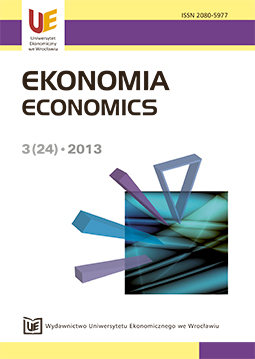Uwarunkowania demograficzne zmian środowiskowych – wybrane problemy
Demographic factors of environmental changes − selected problems
Author(s): Ewa Mazur-WierzbickaSubject(s): Economy
Published by: Wydawnictwo Uniwersytetu Ekonomicznego we Wrocławiu
Keywords: sustainable development; environmental protection; demography
Summary/Abstract: Population growth and related progress of civilization and economy, growing consumption, and at the same time economic disparity, and development between countries lead to a significant violation of the natural environment, adverse and often irreversible changes occurring therein. Nowadays demographic threats are one of the main sources of threats for the environment. Though in some countries we can observe the tendency of downward trend in the number of births (for example in Europe), in other countries especially in Africa and Asia the population growth is significant (in comparison to 1960 the population in Africa increased four times to 2010, and 2,5 times in Asia). The extending lifespan and lower infant mortality because of medicine development, changes of lifestyle, nutrition, and improved living conditions are the main factors of population growth in recent decades. The population growth leads to increased unbalanced consumption and increased production. The studies show that we get close to a dangerous boarder for example for biosphere based on indicator EF2.0 (ecological footprint) which now is 21.9 hectares per person, while the accepted ecological limit capacity for the Earth is 15.7 hectares per person. Rapidly progressive population growth on the Earth and changes under its influence can lead to global break of ecosphere. In a perspective avoiding excessive population growth can be one of strategies for sustainable development. Therefore different population growth in different parts of the world leads to specified environmental problems. For example in Africa it will lead to ground degradation and the decrease of food production. In Europe we have to cope with large energy consumption and other resources (for example water), large amount of industrial and municipal waste, poor biological variety and increased level of greenhouse gases. We have to notice that developing anthropopressure leads to new types of environmental threats so-called global ecological problems, problems which have no limits. Human population has two choices for future growth. The first ignoring increasing contamination which will consequently lead to “automatic recovery” that means coming of hunger, epidemics and population reduction in the world. The second choice assumes the need to control the population number and prevent when too high population number threatens to keep the environment in good condition. The main aim of this work is to show the meaning, influence of demographic factor on changes in natural environment. In the article the author points out that there are relations between population growth and changes occurring in the environment, describing respectively causes and projections of population growth, regional environmental problems and global environmental problems. This work is theoretical. The sources which are used are theoretical work included in literature concerning the discussed problem and public statistical data.
Journal: Ekonomia
- Issue Year: 2013
- Issue No: 24
- Page Range: 164-174
- Page Count: 11
- Language: Polish

